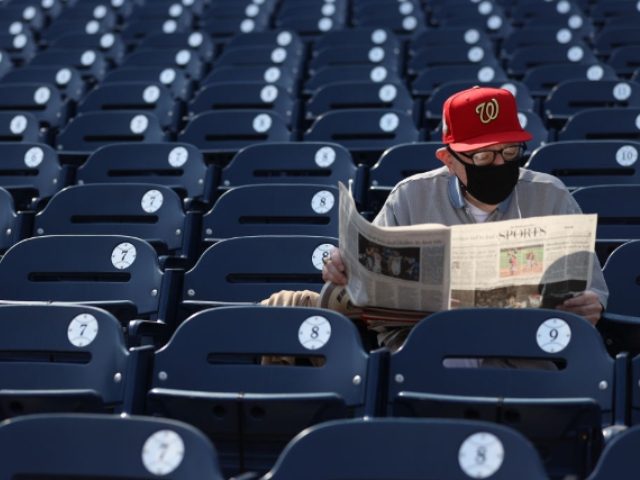With a focus on Major League Baseball’s All-Star Game and the season well underway, the fact that some stadiums are at greater fan capacity while others are still heavily restricted naturally raises questions.
MLB announced that the 2021 season would begin with fans returning to the stands despite some fears over the continuing coronavirus pandemic. Though, what form that return is taking differs from team to team and stadium to stadium. Ahead of the season, the league told each team that they should craft their at-home attendance policies by first taking local government requirements as their guide.
The league’s hands-off policy has ended up with very different attendance rules for each team this season. And according to the Los Angeles Times, the number of fans allowed in the stadiums is all over the place.
For instance, the Arizona Diamondbacks was set to allow 25 percent of Chase Field’s capacity as the season started. On the other hand, the Colorado Rockies opened at 42.6 percent capacity. Meanwhile, the Marlins opened at 25 percent.
Twenty percent seems to be a favorite for several teams, including the New York Mets, the Phillies, and Los Angeles Dodgers, who were only authorized to sell 20 percent of its tickets.
The rest of the National League is similarly disparate.
In California, the Padres are at 20 percent capacity and the Giants at 33 percent. Chicago’s Cubs also opened at 20 percent, but the Milwaukee Brewers allow 25 percent of its stadium to fill with fans just to the north. Down south of the Cubs’ and Brewers’ stomping grounds, the Cincinnati Reds opened at 30 percent capacity.
Many other stadiums opened to a much higher number of fans. In Pittsburgh, the Pirates decided to allow 50 percent capacity. The Cardinals went for a somewhat lower 32 percent, while the Braves went to 33 percent.
Finally, for the National League, the Washington Nationals opened to a tiny 12 percent of its stadium’s capacity.
Twenty percent capacity seems to be a big favorite for the American League. The teams that opened at 20 percent comprise the bulk of the league. Teams at 20 percent stadium capacity include the Los Angeles Angels, the Oakland As, the Mariners, the White Sox, the Detroit Tigers, the New York Yankees,
But twenty percent is not the bottom. Other American League teams opened at lower numbers. The Toronto Blue Jays opened at 15 percent, while the Red Sox opened at a mere 12 percent.
The Texas Rangers opened up 100 percent, the Houston Astros were a bit more cautious, opening at 25 percent capacity.
From there, the numbers bounce around a bit more.
All these disparities tend to claim that these cities and states are each “following the science” to be suspect. If they follow the science, how could the requirements often differ from one stadium to the next?
As Breitbart Sports reported Thursday:
Health officials accused Super Bowl 55 of being a super-spreading event in the making when QB Tom Brady led the Tampa Bay Buccaneers to a lopsided win over the Kansas City Chiefs in February. Not only were health officials in Florida worried, officials on the other side of the country in California even banned Super Bowl parties for fear of spreading the virus.
But despite the loud proclamations, it turned out that there was no appreciable rise in coronavirus cases either in Florida, where the game was held or elsewhere as fans went home.
With another example of undue warnings about super spreading events, officials have constantly demanded that states keep youth sports shuttered to prevent the virus’s spread. But a large study in Wisconsin showed that very few kids, coaches, or parents got the virus when Wisconsin restarted its youth sports despite the panic.
“Experts” have been proven wrong at the collegiate level as well:
Notre Dame was also accused of sponsoring a super spreader event when students stormed the football field to celebrate the school’s upset win over Clemson last November. But no outbreak of the virus was reported in the months after the game.
Like Notre Dame, Alabama fans also faced criticism for swarming onto the field in January after the Crimson Tide won its national championship. Again, no reports of a rise in virus cases were found in the months after the big game.
So, despite all the concerns, there is no evidence that large crowds have ever created coronavirus-spreading events. Yet, that fact doesn’t stop the media from asking the “experts” for their opinions.
Follow Warner Todd Huston on Facebook at: facebook.com/Warner.Todd.Huston.

COMMENTS
Please let us know if you're having issues with commenting.